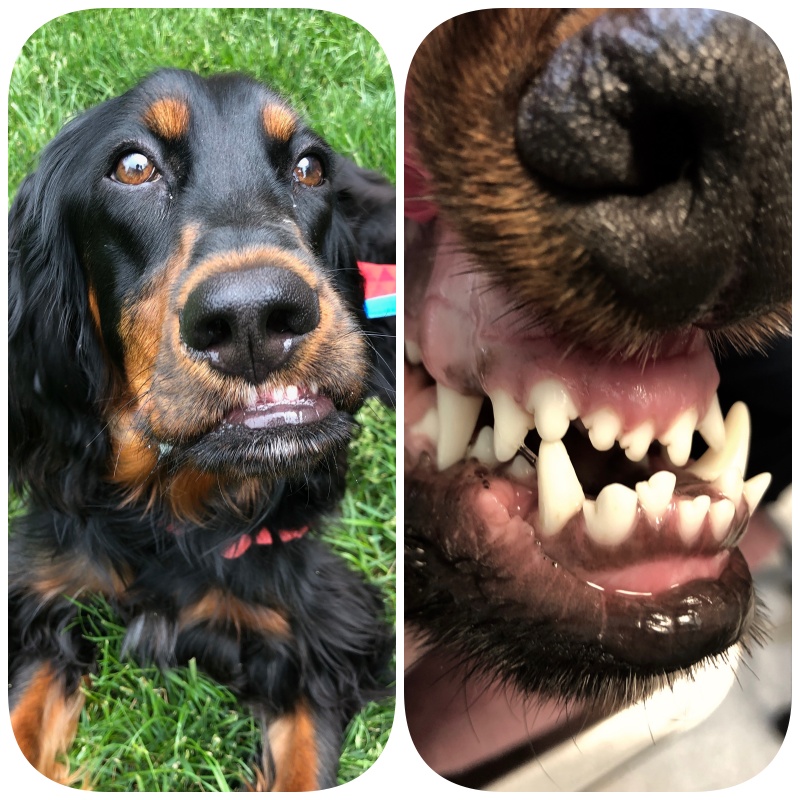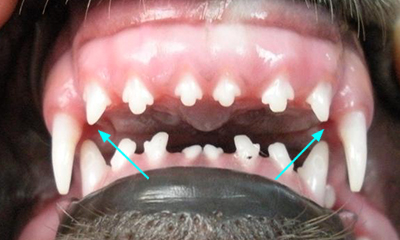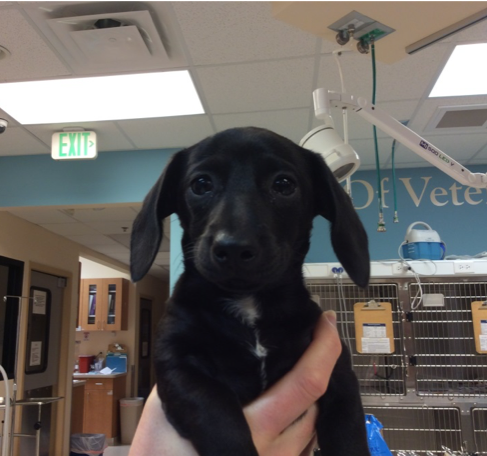class ii malocclusion dog
Overbite Also known as overshot this is when the dogs top teeth overlap the bottom. It can be classified as rostral or caudal.

Malocclusions Misaligned Teeth Animal Dental Specialist
This Scottish Terrier dog had a severe Class III malocclusion resulting in canine trauma from the maxillary intermediate incisors and lingual floor trauma from the maxillary central incisors.

. Class II malocclusions are considered overbites in dogs and cats. Dogs have four types of teeth. Here are the treatments that can be used to treat class 2 malocclusions.
This particular malocclusion may be considered normal in some American Kennel Club breeds eg brachycephalic dogs. Malocclusion involves abnormal relationships of teeth to each other and other oral structures. Though any dog or cat may suffer from dental malocclusion this is considered a very common disorder in the world of purebred dogs.
Lingually displaced 404 canine. Skeletal malocclusion results when an abnormal jaw length creates a malalignment of the teeth. A malocclusion in which a mandibular tooth or teeth have a more buccal or labial position than the antagonist maxillary tooth.
In order to detect a malocclusion it is important for veterinary surgeons and veterinary nurses to have an understanding both of normal occlusion and of the classification. A case report of the orthodontic treatment of a male adolescent with a unilateral dental Class II malocclusion an impacted canine severe maxillary malalignment and a canted maxillary anterior occlusal plane. Class II malocclusion is considered the most frequent problem presenting in the orthodontic practice affecting 37 of school children in Europe and occurring in 33 of all orthodontic patients in the USA.
A dental malocclusion occurs when the upper and lower jaw lengths are considered normal but there may be one or more teeth that are out of normal. 1 Class II malocclusion may also involve craniofacial discrepancies which can be adjusted when patients are adolescent. Crown reduction with endodontic treatment.
Normally the teeth interact in a manner that allows for powerful chewing and tearing of food. The mandible resides distal caudal to its normal location in relation to the maxilla Photo 5. Even the lower incisors can be a problem as they can get hung up behind the palatal rugae and incisive papilla.
In the dog the ideal tooth positions in the arches are defined by the occlusal interarch and interdental relationships of the teeth of the archetypal dog ie wolf. Maxillary Canine Tooth Extraction for Class 2 Malocclusion in a Dog. Treatment options vary for each type of malocclusion.
Extract the tooth that is either impinging on soft tissue or contacting a tooth on the opposing arcade. In rostral crossbite cases similar to anterior crossbite in people one or more of the mandibular incisor teeth are labial to the opposing maxillary incisor teeth when the. The mandible is short with respect to its normal position with the maxilla.
Mandibular distoclusion Class 2 malocclusion. Treatment consisted of full fixed appliances extraction of the maxillary right first premolar and surgical exposure of the impacted. Advanced Continuing Education Courses Online for Veterinarians and Vet Technicians.
Extract a tooth in the opposing arcade that obstructs or interferes with comfortable occlusion. The majority of malocclusion cases result. Open Bite This is when the dogs front teeth fail to meet when the.
There are two types of malocclusion. In this type of malocclusion the mandible and the maxilla are of equal lengths but one or more teeth are misaligned. Class II malocclusion describes occlusion in which the mandible is distal in position to the maxilla ie mandibular distocclusion.
However the adult dentition must be monitored closely and treated to achieve a lif. The mandibles are longer in respect to their normal relationship to the maxilla. Abnormal jaw growth or misalignment of the teeth themselves can result in teeth that do not align in the correct fashion.
Some of the various treatment options include extraction of the offending tooth or teeth removing the crown of a tooth and performing. This happens when the maxilla is longer than the mandible. Malocclusion can present without significant symptoms or can be severely debilitating.
Class II Malocclusion. Malocclusion in dogs is commonly diagnosed in puppies when the primary dentition is present. Incisors canines premolars and molars.
This often results in mandibular canine teeth traumatizing the palate. Class III malocclusions are considered underbites in dogs and cats. Interceptive orthodontic treatment may be elected to temporarily resolve painful contact points with the primary dentition.
The usual treatment options in growing patients. Canine malocclusion can be classified in different ways but here are the main options. This is a type II malocclusion in a dog- the lower jaw is.
With a class 2 malocclusion in which the lower canines are penetrating the palatal mucosa this effectively staples the mandible to the maxilla s in that relationship an abnormal dental interlock. Malocclusion results when the upper teeth do not align properly with the lower teeth. For children who are still growing.
Extraction of the offending was resolved the traumatic occlusion. The treatment options available for these cases are. Orthodontic treatment to move teeth to comfortable.
Class III malocclusion describes occlusion in which the maxilla is distal in position to the mandible ie maxillary distocclusion 1. Underbite Also known as undershot this is when the dogs bottom teeth overlap the top. Malocclusion - rotation of right upper canine 104.
Dentofacial orthopedic treatment to improve mandibular growth For mild cases. Class II malocclusion 02. Orthodontic treatment with fixed braces and intermaxillary elastics For adults with more severe malocclusion.
New Forest Veterinary Dental Service Malocclusions And Orthodontics

Canine Classification A Class I Canine With The Maxillary Canine Download Scientific Diagram

Read This Dentistry Article By Katie Rankin Bs Rvt

Angle S Classification Of Malocclusion Dentodontics

Puppy Teeth Problems The Ultimate Guide Sydney Pet Dentistry

Dog Malocclusion Animal Dentistry Oral Surgery Wisconsin Oshkosh Green Bay Glendale Greenfield Minnesota

Overbite Veterinary Dental Center Malocclusion In Pet

Defining Dental Malocclusions In Dogs Is The First Step Toward Treatment

Maxillary Canine Tooth Extraction For Class 2 Malocclusion In A Dog Semantic Scholar

Recognising Malocclusion In Dogs And Cats Veterinary Practice

Class Ii Malocclusions When The Lower Jaw Is Shorter Than The Upper Jaw The Cove

Malocclusion In Dogs And Cats The Veterinary Nurse

Canine S Classification Download Scientific Diagram

Malocclusion In Dogs And Cats The Veterinary Nurse

Overbite Veterinary Dental Center Malocclusion In Pet
Helping Your Puppy With Teeth Misalignment Malocclusions

Feature Oral Health Issues In The Dog Developmental Abnormalities Malocclusions By David E Hansen Dvm Favd Davdc